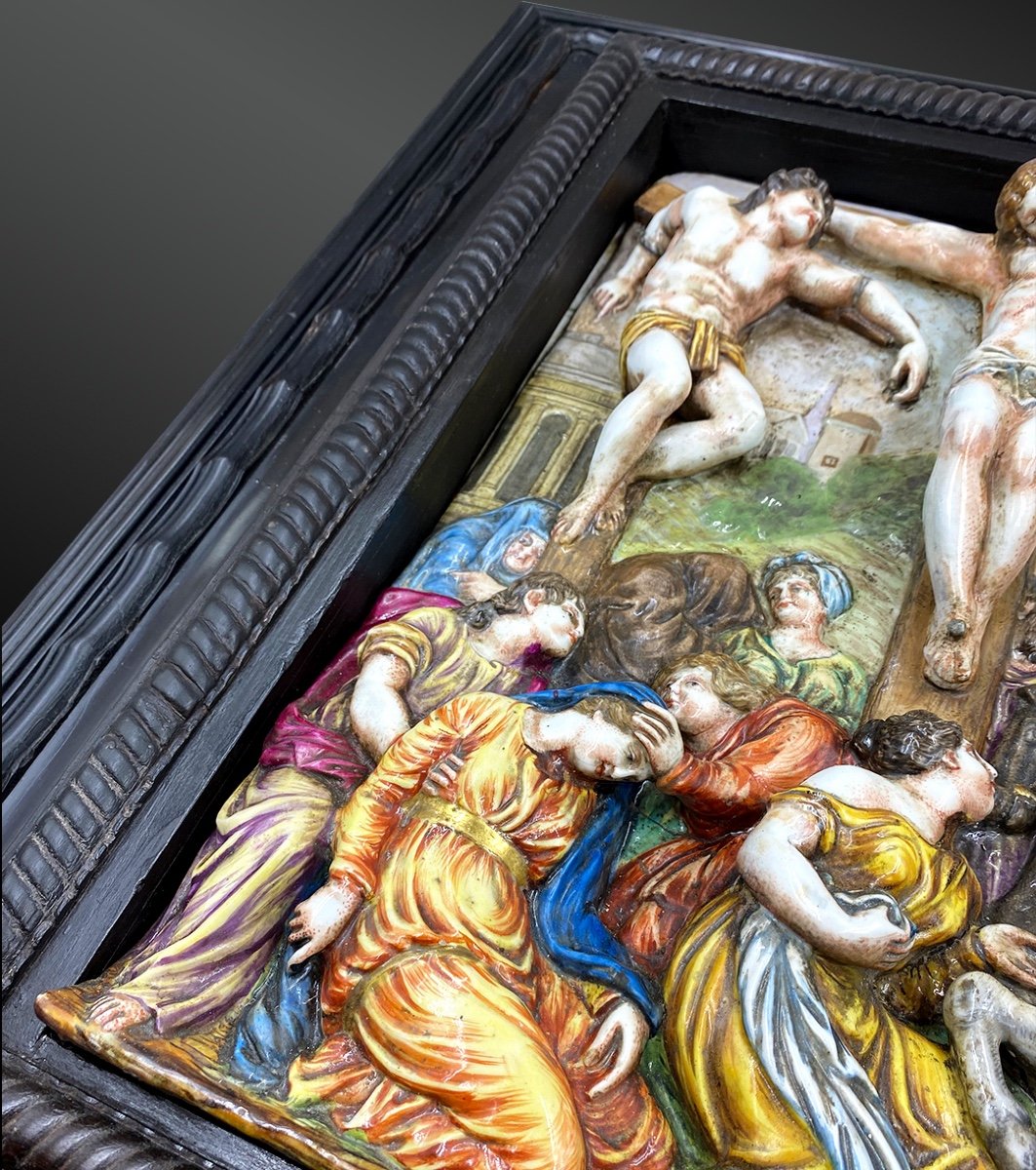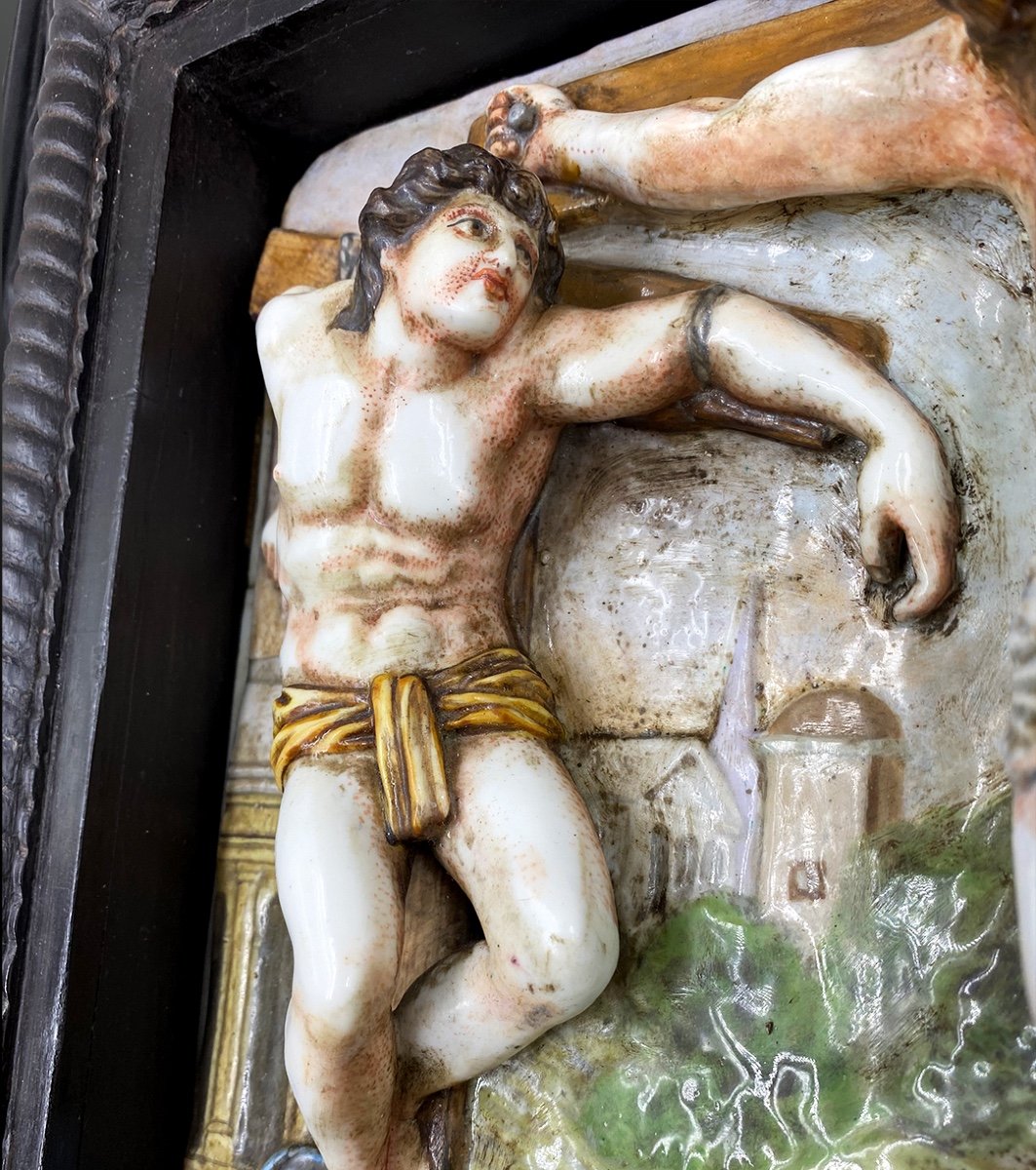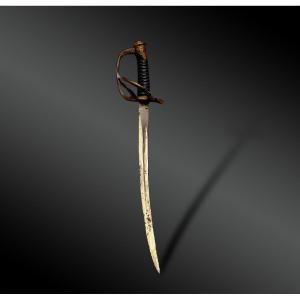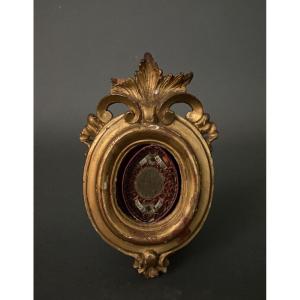Mark of the Royal Manufactory of Capodimonte featuring a crowned "N" referring to the period from 1771 to 1834.
Naples, Italy
Late 18th century
Porcelain
H. 40.5 ; L. 32.5 cm (when viewed)
H. 66 ; W 59 cm (with frame)
This crucifixion is taken from the Gospel of Saint John (19, 25-27): "Now standing by the cross of Jesus were his mother and his mother's sister, Mary, the wife of Cleophas, and Mary Magdalene. When Jesus saw his mother and the disciple he loved standing by her, he said to his mother, 'Woman, this is your son.
Mary Magdalene, in the centre of the scene, aligned with Christ on the Cross, wears a yellow tunic with one shoulder uncovered. To her right, the Virgin Mary, her head covered in a blue cloth and almost tottering, is supported by Mary, wife of Alphaeus, known as Cleophas, in a purple garment, and John dressed in red. These colours evoke a particular symbolism: yellow echoes eternal light, blue the mantle of Humanity and red the Passion. The lower right of the scene features two horsemen, including Longin the centurion, the helmeted Roman soldier.
In the background, occupying the upper half: Christ and the two thieves.
On the right, Dismas, the good thief, looks at Christ, while Gestas, the bad thief, turns away. Both are tied by ropes to the patibulum of their T-shaped crosses. Christ's cross is Latin, with the Latin initials "INRI" on the upper part of the stipes, referring to Jesus of Nazareth, King of the Jews.
The city of Jerusalem stands out in the background.
This composition is reminiscent of the Crucifixion in the missal of the Master of Jean Rolin or the Crucifixion in the church of Saint-Jacques in Rothenburg ob der Tauber in Germany.
Ref : 4082
Text and photos © FCP CORIDON




































 Le Magazine de PROANTIC
Le Magazine de PROANTIC TRÉSORS Magazine
TRÉSORS Magazine Rivista Artiquariato
Rivista Artiquariato